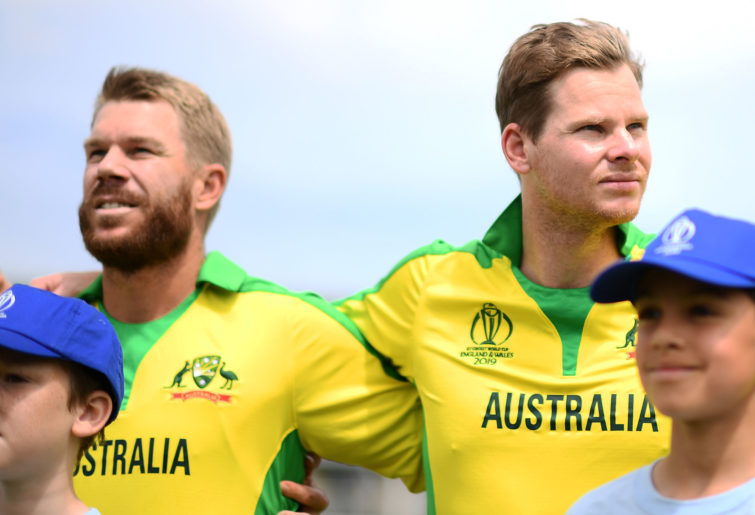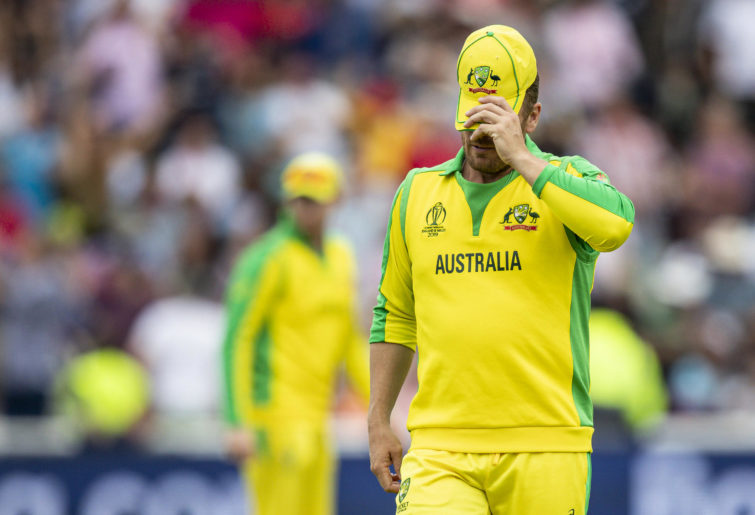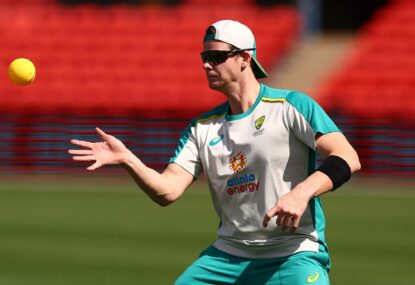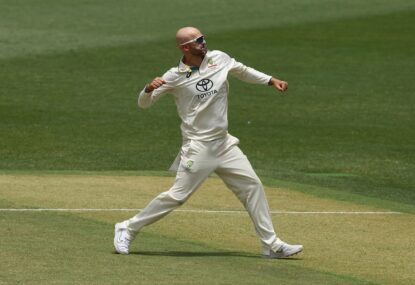After being knocked out of this World Cup, Australia now have to decide whether to rebuild their ODI team with inexperienced players or stick with their veterans and aim for the No.1 ranking.
Australia’s loss to England in the semi-final, which saw them slip from third down to fourth in the rankings, has posed a tricky question to the Australian think tank.
The Aussies have re-emerged as a force in ODI cricket, having won 15 of their past 18 games. That golden run includes a series win away from home over fellow World Cup semi-finalists India and victories against the teams that feature in the final, England and New Zealand.
If they return to taking all of their ODI series seriously, Australia have the makings of an excellent side that could challenge for England’s top ranking. The alternative is to do as they did in recent years and use ODIs mostly as a venue for trialling new talent.
In the four years between the 2015 World Cup and this one, Australia rarely picked anything near their best XI. While England, for example, tried to field their strongest line-up wherever possible over that period, Australia often chose to rest key players and blood a host of newcomers.

(Harry Trump-IDI/IDI via Getty Images)
In their ODI series after winning the 2015 World Cup, Australia used ten players who were not part of the World Cup-winning XI. Seven of those fresh faces hadn’t even been in Australia’s World Cup squad.
In that series in England, Australia handed debuts to Ashton Agar, Joe Burns and Marcus Stoinis and giving opportunities to inexperienced ODI players James Pattinson, Pat Cummins, Nathan Coulter-Nile and John Hastings.
Over the following few years Australia seemed to feel that bilateral series were not important and that it was wiser to protect their best players for matches that really mattered across all formats. There were several times this descended into farce.
The most infamous example was the ODI series Australia lost 5-0 in South Africa in October of 2016. No Starc, no Hazlewood, no Cummins, no Faulkner, no Coulter-Nile, no chance.
Australia instead fronted up against the strong South African batting line-up with a quartet of uncapped quicks who all owned ordinary domestic one-day records. Combined, Daniel Worrall, Scott Boland, Joe Mennie and Chris Tremain had taken a total of 53 wickets at 37 in their List A careers.

(Andy Kearns/Getty Images)
They were coming off a JLT Cup season in which they together had grabbed just ten wickets at 49. Not one of those four bowlers was even an automatic choice for their state one-day team yet somehow all were playing for Australia.
Not surprisingly, those four debutants struggled badly in that series in South Africa, together averaging 46 with the ball and going at nearly seven runs per over. An equally strange selection soon followed.
Less than three months after that debacle in South Africa, Australia picked to make his ODI debut a 21-year-old batsman who had yet to even play 50-over cricket for his state. Imagine for a moment a player earning a Test cap before they had made their Sheffield Shield debut.
That premature ODI cricketer was Sam Heazlett, who played one match in New Zealand in January 2017 and has not represented Australia since.
Heazlett is a gifted young batsman and has now put together an impressive List A record. But there would have been a host of accomplished one-day batsmen around the country dismayed that they had been overlooked for ODIs in favour of a guy yet to even play List A cricket.
This strategy of resting key players and blooding random greenhorns destabilised the Australian ODI team and saw them tumble down the rankings. And you could argue it didn’t even help Australia unearth any future ODI stars.
The XI that lost to England in the semi-final was filled with veterans as Australia banked on tried and tested players. The youngest cricketer in that side was Pat Cummins, who has been playing for Australia for eight years.
Do Australia now continue down this road, sticking with a core of 16 to 17 ODI players and picking their best possible XI wherever feasible – line-ups filled with experienced campaigners? Or do they go back to churning through an army of cricketers, taking punts on youngsters and project players?
I would prefer to see them find a middle ground. Australia cannot return to continually picking massively understrength ODI sides missing most of their best cricketers, but there is definitely merit in trialling one or two inexperienced players per series.
Such unproven talents should be better able to adapt to the highest level if they are in a team packed with seasoned international cricketers.
First and foremost, on the batting front, it should be the likes of Peter Handscomb (28), Ashton Turner (26) and Mitchell Marsh (27) who should be given plenty of ODI chances in the short term. All three players are young enough to feature in the next World Cup in India in 2023.
By the time that World Cup rolls around, David Warner, Aaron Finch and Usman Khawaja will all be 36 years old, while Shaun Marsh will be 39. There is a good chance none will still be in the Australian team.
Steve Smith will be 33 years old and should still be playing, but Glenn Maxwell will be 34 so his international career could well be over by then.
Marcus Stoinis will be 33 by the next World Cup, but as long as he can hit one ODI 50 between now and then the selectors should be convinced he’s worthy of a spot in the starting XI. Being more serious, wicketkeeper Alex Carey looks like he has a long ODI career ahead of him at 27 years old.
On the bowling front, all four members of Australia’s attack in the semi-final – Mitchell Starc, Pat Cummins, Jason Behrendorff and Nathan Lyon – could potentially still be in the mix four years from now. It seems unlikely, though.
Fortunately, Australia have plenty of promising young bowlers who should get ODI exposure in the next few years. Let’s hope, though, that rookie bowlers and batsmen get to play alongside plenty of gifted veterans.
Australia need to find a balance between experience and youth in their ODI selections as they build towards the next World Cup.







































































































